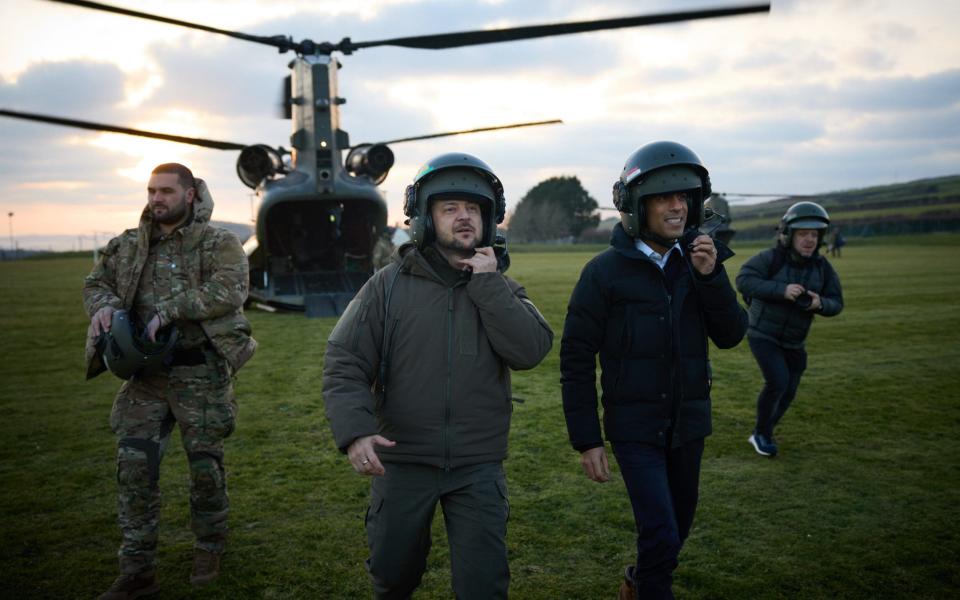Rishi Sunak may be keen to send Ukraine jets, but trouble is on the horizon

At RAF Coningsby, just down the road from the Lincolnshire Aviation Heritage Centre, two squadrons of Royal Air Force Typhoons lie on the asphalt and under the hangers.
The aircraft here make up a total of 100 Typhoons held by the RAF in its dwindling fleet of fighter jets.
They are among the next targets on Volodymyr Zelensky’s wishlist of weapons that he took to Westminster on Wednesday.
But these jets won’t be going anywhere fast.
Training new pilots at Coningsby, the UK’s training station, is out of the question. It would take too long and is impractical, given Britain’s constipated pilot training system.

What is more, Typhoons are made by four countries: Spain, Italy, the UK and Germany. Each one would need to give permission to donate the aircraft and, as we saw over the Leopard tank debate, that is never a given.
The PM could not hand over Typhoons even if he wanted to; he would have to get treaty permissions from all the others.
So any training is most likely to be done by existing Ukrainian pilots well away from an actual cockpit, in one of the simulators able to replicate a modern jet’s systems.
Any actual flying or donations - to put into practice the skills and drills honed to perfection on the computers - are, however, likely to be with the RAF’s ageing Tranche 1 Typhoons, which make up 20-25 of the total.
These aircraft, the first ones brought into service and now in danger of being outclassed in the skies, are only used by the RAF for air-to-air defence; they are not configured for the ground-attack role. It is possible to convert them but it would take months; another reason they will not be sent to Ukraine.
Justin Bronk, a top airpower analyst, points out that the RAF Typhoon force is “badly, badly overstretched already”.
“Too many operational commitments with too few aircraft, and inadequate spares and munitions stocks,” he adds. “The value of any Tranche 1 gift would be almost purely symbolic, rather than a practical and sustainable UkrAF asset.”
Analysts argue that Swedish Gripens or the F-16s held by many Nato allies are the most appropriate aircraft for deployment in Ukraine. Britain has none.
The RAF’s fleet of fighter jets has been halved since the Tories took power in 2010 after the Harrier jump jets and Tornadoes were both retired from service.
Britain does have some F-35s, the most advanced fighter jets in the world. But for obvious reasons they are also going nowhere fast.
As the debate about giving Western aircraft to Ukraine gathers pace and starts to focus on the US-made F-16, it is right to anticipate any future decisions over equipment.

The idea of starting training now in advance of any decision was described by a defence source as a “no regrets policy”.
Whatever Rishi Sunak does, it will not be enough to satisfy everyone.
As he fended off questions about the pace of Britain’s fighter jet support on Wednesday, he pointed out it would take at least three years to train a pilot. Mr Zelensky responded that he had pilots who have already trained for two and a half.

 Yahoo Sport
Yahoo Sport 





































